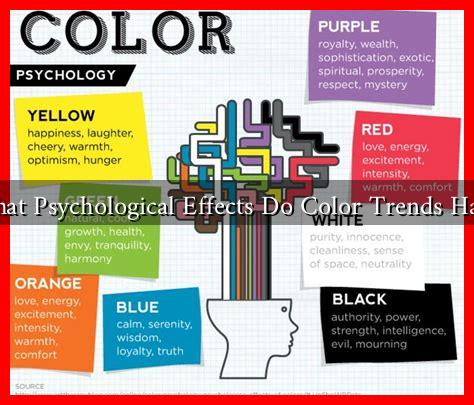-
Table of Contents
What Psychological Effects Do Color Trends Have?
Color is a powerful tool that influences our emotions, behaviors, and perceptions. In various fields such as marketing, design, and art, color trends play a significant role in shaping consumer preferences and societal moods. This article explores the psychological effects of color trends, examining how they impact our daily lives and decision-making processes.
The Psychology of Color
Color psychology is the study of how colors affect human behavior and emotions. Different colors evoke different feelings and associations, which can vary across cultures. Here are some common associations:
- Red: Often associated with passion, energy, and urgency. It can stimulate appetite, which is why many restaurants use red in their branding.
- Blue: Conveys calmness and trust. It is frequently used in corporate branding to instill a sense of reliability.
- Green: Represents nature, health, and tranquility. It is often used in wellness products and eco-friendly brands.
- Yellow: Evokes feelings of happiness and optimism but can also cause anxiety in excess. It is commonly used in marketing to grab attention.
- Purple: Associated with luxury, creativity, and spirituality. It is often used in beauty and high-end products.
Color Trends in Marketing and Branding
Color trends significantly influence consumer behavior. Brands often adapt their color schemes to align with current trends, which can affect purchasing decisions. For instance, a study by the Institute for Color Research found that color increases brand recognition by up to 80%. This highlights the importance of color in creating a memorable brand identity.
Consider the following examples:
- Millennial Pink: This soft pink hue became a trend in the 2010s, symbolizing a shift towards gender neutrality and inclusivity. Brands like Glossier and Airbnb adopted this color, appealing to younger consumers.
- Classic Blue: Pantone’s Color of the Year for 2020, Classic Blue, was chosen for its calming and reassuring qualities, reflecting a collective desire for stability during uncertain times.
Color Trends in Interior Design
In interior design, color trends can transform spaces and influence mood. For example, the use of earthy tones has surged in popularity as people seek comfort and connection to nature, especially during the COVID-19 pandemic. A survey by the National Kitchen & Bath Association found that 60% of homeowners prefer warm, neutral colors for their living spaces, as they create a sense of calm and relaxation.
Some popular color trends in interior design include:
- Soft Neutrals: Colors like beige, taupe, and soft gray create a serene environment, making them ideal for bedrooms and living areas.
- Bold Accents: Bright colors used as accents can energize a space. For instance, a vibrant yellow chair in a neutral room can serve as a focal point.
The Impact of Color Trends on Mental Health
Color trends can also have profound effects on mental health. Research indicates that certain colors can influence mood and emotional well-being. For example, exposure to natural light and colors associated with nature, such as greens and blues, can reduce stress and anxiety levels.
A study published in the journal Environmental Psychology found that individuals in environments with natural colors reported lower levels of stress and higher levels of well-being. This underscores the importance of color in creating spaces that promote mental health.
Conclusion
Color trends are more than just aesthetic choices; they have significant psychological effects that influence our emotions, behaviors, and perceptions. From marketing and branding to interior design and mental health, the impact of color is pervasive. Understanding these effects can help individuals and businesses make informed decisions that resonate with their target audiences.
As we continue to navigate a world shaped by color trends, it is essential to recognize the power of color in our lives. By harnessing this knowledge, we can create environments and experiences that enhance well-being and foster positive connections.

